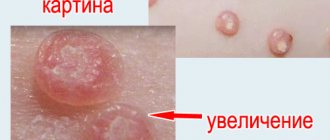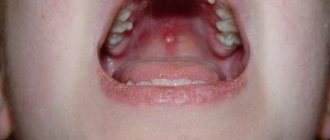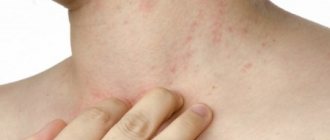Is it possible to get meningitis if you walk in cold weather without a hat? Let's look at all aspects of this disease together with GMS Clinic pediatric neurologist Maria Ostrovskaya on the pages of the Healthy Children Internet portal.
Before moving on to the anatomy of this dangerous disease, we cannot help but talk about two cases that occurred recently in the UK and caused a great public outcry, which led to mass protests by citizens in protecting children from meningitis.
It all started when the attention of UK news agencies was drawn to a photo of a girl covered in a rash lying in a hospital bed, which her mother posted online. The girl was two years old, her name was Faye Burdett, and she died of B strain meningitis after spending 11 days in hospital. The BBC reports that following this tragic incident, a campaign has been launched calling for universal vaccination of children against meningitis strain B. The petition has received more than 400,000 signatures. It is worth noting here that the UK became the first country in the world to protect children from this dangerous disease by introducing a vaccine against meningitis B, which was called Bexsero.
Another child's case, which has received widespread publicity in the UK, also involves meningitis, this time of the W strain. Former England rugby captain and 2003 World Cup champion Matt Dawson said his family had to go through a "two weeks of hell" while his two-year-old son was battling the disease, the BBC reports. Fortunately for Dawson and his family, everything ended well and the boy recovered. The ex-England international has since also publicly spoken out in support of a petition for global meningitis vaccination. Matt posted photos of the sick child for everyone to see so that people understood the seriousness of this disease.
The Meningitis Research Foundation UK reports that around 1 in 10 cases of meningitis is fatal, and around one in three survivors suffer long-term consequences such as amputation, deafness, epilepsy and reduced intelligence. There are five main types of meningococcal infection: groups A, B, C, W and Y. This bacterial infection most often affects children under one year of age. In this age group, the incidence is 22 per 100,000 children. Symptoms include high fever with cold hands and feet, confusion, vomiting and headaches. Today there are effective vaccines against various groups of meningitis, but a vaccine for meningitis B only became available in 2015. The incidence rate of meningitis B among children 1 to 4 years of age is 1 in 20,000.
In the UK, the meningitis B vaccine is currently only available free of charge to children born on or after 1 May 2015. This is because newborns and children under five years of age are most at risk of the disease, with the peak incidence occurring at 5 months of age. Bexsero protects against infection by meningococcal group B bacteria, which cause more than 90% of meningococcal infections in young children. The cost of vaccination in private clinics is £75, but can reach up to £150 in some clinics. Vaccination requires three such shots, and demand for the vaccine outstrips supply, so the manufacturer promises to increase supplies.
James Stewart, visiting professor at the University of Bristol and consultant to the World Health Organization (WHO), warns: “We need to find out how well this vaccine works. It may not be time to expand the program yet.”
There is currently no vaccine against meningitis B in Russia. However, vaccination against other types of meningitis is available to the public.
Meningitis
Meningitis is a disease that affects the membranes of the membranes of the brain and spinal cord, while the cells of the organ itself are not damaged. The pathological process occurs outside the meninges. There are two types of this disease, bacterial and viral.
Most often, meningitis is viral in nature, occurring due to advanced and untreated viral infections. Bacterial types of this disease are much less common, but damage the brain more seriously and its consequences are more severe.
Almost every year, outbreaks of viral meningitis occur in certain areas, affecting in most cases children and young people, but in this case the disease cannot be called fatal, since with timely and adequate treatment it recedes.
You can get meningitis for various reasons, but there are risk factors that can affect the body's protective functions, weakening them.
Risk factors:
- Frequent drinking of alcohol.
- Smoking.
- Hypothermia.
- Insolation.
This disease has its own classification and differs by type. Each type of this disease requires a special approach to therapy. In addition, meningitis can be primary and occur independently, or secondary, that is, develop against the background of an existing infection.
Types of meningitis:
- Staphylococcal.
- Tuberculous.
- Enteroviral.
- Herpes.
- Fungal.
Many people ignore diseases of viral origin, believing that they do not pose a danger, but if such ailments are not treated, they can cause complications in the form of meningitis.
Causes of meningitis
Meningitis that has a primary cause is more contagious than secondary meningitis. The reasons for the occurrence of pathology are different. The disease develops due to: bacteria:
- meningococcus is the causative agent of meningitis and infections of meningococcal origin;
- pneumococcus is a similar hemophilus influenzae, which is one of the most common causes of the disease;
- tuberculous meningitis can affect the occurrence of a secondary type of lesion;
- streptococcal infection with group B infection, more often appears in newborns;
- coli. This strain is observed in children under 1 year of age;
- Haemophilus influenzae is the cause of 33% of clinical cases;
- Listeria affects people with weak immunity and retirement age. Viruses. The process in the shells of the brain can be started by:
- enteroviruses
- arboviruses
- herpetic virus type 1-2
- coxsackie virus
- mumps and, in exceptional cases, cytomegovirus. The fungus can provoke serous inflammation, in particular:
- cryptococcus and candida. Spirochetes. This includes:
- syphilitic meningitis, causative agent – Treponema pallidum, Borrelia (provokes Lyme disease and leptospirosis). Other reasons. The causative agents of malaria are Plasmodium and Toxoplasma.
Rash due to meningitis in children and adults
The presence of a rash during meningitis allows you to quickly and accurately establish a diagnosis. Young children cannot describe their condition, which makes diagnosis difficult, however, when a rash appears on the skin, the clinical picture becomes clear. In both children and adults, a skin rash usually appears on the first day of illness, but there are situations when such a symptom appears two days after the onset of the disease.
Rashes due to meningitis indicate that it is necessary immediately , especially since the area of such lesions is increasing at enormous speed. The size and appearance of these skin manifestations indicate the type of meningitis pathogen. The wider the affected area and the brighter the rash, the more severe and dangerous the pathological process.
Typically, skin rashes appear with bacterial meningitis ; the viral nature of this disease is often not accompanied by a rash.
What does it look like?
In case of bacterial meningitis:
- The rash looks very bright, has a red or red-violet color and does not rise above the skin level.
- Such rashes do not fade if you press hard on them and hold the pressure for a while, which is a sign of this serious form of meningitis.
- This characteristic of a rash due to a bacterial disease is typical for both children and adults.
- The localization of the rash always appears on the lower and upper extremities and on the sides of the patient.
With meningitis of viral origin, a rash appears quite rarely.
In cases where rashes do occur, they look different:
- the rash is not so bright;
- has a different shape;
- can form on any part of the body, including mucous membranes.
If spots on the skin appear as a result of meningococcal infection, this is a rather alarming symptom. Such manifestations indicate that the type of disease is more likely of a bacterial nature and the disease is already progressing, and the patient begins to develop sepsis. The prognosis for this situation is extremely unfavorable , especially if hemorrhages appear on the head, in which case the outcome can be fatal.
Types of disease
By origin:
- the primary form of meningitis is a disease of the first stage, when the disease has formed independently, and purulent foci do not appear due to the absence of infectious lesions in other organs;
- the secondary form develops when brain injuries and the underlying syndrome occur due to infectious diseases. So, meningitis is a complication of: syphilis, tuberculosis, mumps, etc.
By type of inflammation:
- The purulent form is formed as a result of complications of inflammatory foci in the lining of the brain. The main reason is bacterial damage;
- Serous form. Diseases of this type are often mild and not accompanied by pus. Viruses enter the blood and cause pathology.
With the flow:
- the acute form occurs within a few days and is characterized by sharp and intense symptoms;
- fulminant is the most severe form of meningitis, characterized by even more rapid damage. Death can occur within 1 day;
- chronic – affects slowly, characterized by gradually increasing symptoms.
First signs
The symptoms of meningitis cannot be ignored; they manifest themselves very clearly, causing the patient a lot of suffering. In both adults and children, the symptoms of this disease are almost the same. Later, when meningitis has already progressed, very severe symptoms of a neurological nature may appear, indicating an advanced stage of the pathological process.
Initial signs in children:
- Unbearable headache.
- Severe nausea and vomiting.
- Painful sensations in the eyes, aggravated by pressure.
- Convexity of the fontanel.
- Increased body temperature to high levels.
- Posture characteristic of meningitis - the head is thrown back, and the legs are bent at the knees and pressed to the chest.
- Rash and skin hyperesthesia, the child cannot tolerate any touching of his skin.
- The baby wants peace and quiet; bright lights and any sounds irritate him.
These signs may indicate many ailments, but after a day the disease develops and a full clinical picture of meningitis appears.
Initial signs in adults:
- Intense headache.
- Heat .
- Vomiting , which may not be accompanied by nausea.
- Inability to move due to pain.
- Diarrhea alternating with constipation.
- Contraction and pain of tendons and muscles.
- When you tap on the patient's cheekbone, unbearable pain spreads throughout the skull.
- Pain in the eyes.
- Rash.
If treatment is delayed, meningitis progresses rapidly and causes more severe symptoms, similar in children and adults.
Late signs:
- Manifestations of cerebral edema.
- Cloudiness and loss of consciousness.
- Cramps.
- Exotropia.
- Development of coma.
Causes
reasons for the occurrence of meningitis . Most often, this disease occurs against the background of human infection with meningococcal infection. Bacteria enter the body by airborne droplets and penetrate the blood very quickly, causing an inflammatory process in the membranes of the brain.
In addition, the infection can be caused by other viral . Sometimes meningitis can be transmitted in other ways.
Other ways of transmitting meningitis:
- During childbirth, the infection can be transmitted from mother to child.
- When infected feces enter the oral cavity.
- Lymphogenous and hematogenous route.
- Through insect bites.
- Through water contaminated with rodents and food contaminated with meningitis bacteria.
Outbreaks of this disease always occur in spring . The fact is that the body of any person is equipped with an immune system that protects the human body. In spring, the body is very weak, because at this time there is a lack of vitamins, sun exposure, and viruses attack especially actively. Therefore, meningitis bacteria, entering the human body, do not feel obstacles and penetrate the brain.
There are no age restrictions for this disease; cases of meningitis have been recorded in infants 1 month old and in elderly people over 80 years old .
About the disease
Meningitis is a serious disease that damages various protective membranes of the brain. The main danger is the development of complications that threaten the patient's life. If there are suspicions or symptoms of the disease, mandatory hospitalization is indicated. Meningitis in adults develops quite often; a person’s age does not play a key role.
Meningitis is an inflammatory injury localized in the lining of the brain or spinal cord. The presence of the disease is indicated by severe, intense pain in the head, high temperatures, foggy consciousness, sensitivity to light and sound, and a number of other symptoms.
The inflammatory process in most cases is provoked by a harmful microorganism: virus, fungus or bacteria. Meningitis is often a consequence of damage to the body by another disease with an infectious nature of manifestation. There is a danger not only to health, but also to life, as it can cause death. Particularly dangerous are forms of meningitis caused by fungi and bacteria.
To treat the disease, antibiotics and drugs that act on viruses and fungi are used. An individual selection of medications is carried out by a general practitioner; in the future, another specialist may join if indications for this are discovered. Treatment is carried out exclusively within the hospital.
Treatment of meningitis
The mainstay of treatment for meningitis is antibiotics . With the help of these drugs, it is possible to stop the development of the disease. Therapy is carried out exclusively in the infectious diseases department of the hospital.
First of all:
- The patient is provided with bed rest and gentle nutrition, as these are important conditions that must be observed for the treatment to be effective.
- In addition to antibacterial agents, the treatment of meningitis includes antiviral drugs, and, if necessary, resuscitation measures are performed.
- Antihistamines and anti-inflammatory drugs are prescribed to alleviate the patient's condition and relieve symptoms.
The course of treatment for a person of any age with meningitis is 10 days . If there are complications in the form of pus in the cranial cavity, then the treatment time increases. After discharge from the hospital, the patient remains on home treatment for a long time. Some people who have had meningitis need about a year to fully recover.
Treatment
Treatment differs depending on the type of provocateur. Conventionally, therapy is divided into symptomatic (alleviates the patient’s condition) and treatment of pathology. To eliminate meningitis, the following is used:
- bacterial: Benzyllenicillin, Ceftriaxone - drugs eliminate streptococci, pneumococci and meningococci. Ceftazidime and Meropenem are especially important in the fight against hemolytic streptococci. Levomycetin is used to destroy E. coli.
- tuberculous: Isoniazid, Phtivazid, Steptomycin - drugs eliminate the causative agent of tuberculosis.
- viral: to eliminate it, doctors often prescribe Interferon and drugs from the group of glucocorticosteroids.
- fungal: Amphotericin B and 5-Flucytosine are prescribed; Fluconazole can be used as an auxiliary therapy.
Symptomatic treatment:
- allergies – Claritin, Suprastin;
- vomiting – Cerucal, Motilium;
- temperature – Nuroven, Diclofenac;
- irritability – Tenoten or Valerian tincture;
- edema – Diacarb, Uroglyuk;
- normalization of cerebrospinal fluid - Cytoflavin.
Consequences
In some cases, this disease may have its consequences. Inflammation of the meninges is almost always cured completely , and the patient forgets about this disease, but if medical measures were taken late and the disease was severe, some complications may arise.
Complications:
- Children experience mental retardation.
- damage .
- Paralysis and paresis.
- Complete blindness or strabismus.
- impairment .
- Asthenic syndrome.
- Lethargy.
- Lack of attention.
- loss , etc.
Brain diseases are extremely dangerous . If the infection makes its way into this organ, then the functioning of many body systems occurs. In the absence of adequate treatment, the prognosis is extremely unfavorable, even death .
There is a vaccination against meningitis , it can protect both adults and children from this disease. It is necessary to vaccinate in places where outbreaks of this disease occur regularly.
Meningitis is an infectious disease. When microorganisms of a pathogenic group enter the tissue of the pia mater or the cerebrospinal fluid, an inflammatory process develops, which is accompanied by a number of characteristic symptoms. One of them is a rash on the body. It indicates blood poisoning and is generalized. A rash with meningitis is evidence of the spread of infection throughout the body.
Classification of spinal cord meningitis
According to its etiology, meningitis of the spinal cord is:
- Bacterial, that is, caused by tuberculosis bacillus, pneumococcus, meningococcus and similar bacteria.
- Viral meningitis is caused by acute lymphocytic choriomeningitis, ECHO or coxsackie enteroviruses.
- Fungal: candidiasis, cryptococcosis and so on.
- Protozoal is observed in diseases such as malaria, toxoplasmosis, etc.
By inflammatory nature:
- Purulent meningitis, in which there are many neutrophils in the cerebrospinal fluid.
- Serous suggests a predominance of lymphocytes.
Pathogenesis:
- Primary form: no history of general infection.
- Secondary form: complication after infection.
Prevalence:
- Limited meningitis.
- Generalized meningitis.
Flow:
- Lightning fast.
- Spicy.
- Subacute.
- Chronic.
Severity:
- Light form.
- Medium severity.
- Severe degree.
- Extremely severe form.
What is the pathogenesis of its appearance?
The entry point for infection can be:
- upper respiratory tract (the pathogen enters the air through contact with a sick person or carrier);
- biological fluids of the body (the so-called parenteral transmission mechanism, when the pathogen enters the body when the integrity of the skin is damaged).
The contact and household mechanism of transmission is also discussed, as a result of which one can become infected through the immediate use of household items of the patient. Cases of infection of newborns from carrier mothers during passage through the birth canal have been described .
The etiological factor may be meningococcus, coliform bacteria, pseudomonas aerogenosis, enterococcus and other bacteria. Meningococcal meningitis is especially dangerous, the course of which often has a fulminant form and is called meningococcemia.
Viral pathogens: adenoviruses, enteroviruses, herpes virus and others.
Once in the human blood, the microorganism with its current reaches the cells of the brain membrane, penetrates them and begins to destroy their structure. It is also capable of producing an aggressive toxin, which increases the permeability of the walls of blood vessels and provokes the release of blood under the skin.
Reversibility of such a process is possible only with emergency use of drugs that will deprive the pathogen of viability and maximally destroy its amount in the blood.
Prevention
Preventive measures include:
- increased precautions regarding personal hygiene;
- minimize contact with sick people;
- add food with vitamins and minerals to your diet;
- avoid crowded areas, especially during periods of exacerbation of acute respiratory infections;
- carry out wet cleaning once every 2 people for 3 days;
- eliminate tension as much as possible;
- exercise;
- prevent hypothermia;
- timely treatment of viral and other diseases;
- to refuse from bad habits;
- do not self-medicate.
What does the rash look like?
More often, a rash is a sure sign of a fulminant form of meningitis. It develops with a minimal incubation period, literally in the first day after infection. The higher the rate of spots appearing, the more massive the infection and the more severe the form of the disease.
It happens that the elements of the rash spread so quickly over the surface of the body that in the first hours they occupy almost the entire skin. At the same time, the patient’s body temperature rises sharply and other meningeal symptoms develop.
The appearance of the rash is quite specific; it is unlikely to be confused with that of measles, chicken pox, or rubella. These are hemorrhagic elements that rarely appear on the face . Erythema is pinpoint hemorrhages - the result of the activity of meningococcal toxins.
An increase in the permeability of capillary tissue and the release of blood under the skin is accompanied by intense headache, the desire to take a forced position of the body, weakness and nervous disorders.
The rash with meningitis is red or red-violet in color, does not extend beyond the relief of adjacent skin, and does not turn pale if you press on it with a finger. Erythemas are located on the upper and lower extremities, on the sides of the torso.
As the process worsens, individual elements of the rash can grow so large that they merge with each other. This indicates an extremely severe form of the disease.
Methods of transmission of the disease
Infection in patients is transmitted in a variety of ways, so special care is required in patients. Defeat is possible through:
- air;
- contact or household method;
- eating unprocessed foods or eating with unclean hands;
- blood;
- lymph;
- hereditary lesion;
- through liquid from polluted water bodies.
What is the peculiarity of meningococcemia in children?
A rash with meningitis in children often indicates the development of a fulminant form of the disease - meningococcemia. It is accompanied by hyperthermia, nausea, vomiting, pain in the eyeballs, and bulging of the fontanel (in infants).
The child lies in a characteristic position: legs are pressed to the chest, head thrown back. The skin has increased sensitivity, the child does not allow anyone to touch him, he wants peace and quiet. Bright rays of light, as well as sounds, irritate him and cause him to cry.
What should such a rash be differentiated from?
Seeing the appearance of hemorrhagic rash elements on the child’s body, mothers may suspect a severe manifestation of an allergic reaction, for example, to a food product or a newly used cosmetic care product. The distribution frequency of such elements is quite similar.
However, with meningitis, unlike allergies, the rash: does not itch, does not hurt, is accompanied by a high temperature, does not turn pale when pressed, and is not located on the head and face in particular.
Elements of a meningeal rash appear in stages, as the next amount of meningococcus is released into the blood. Each such addition is accompanied by an obligatory temperature jump.
The distinctive features of the rash due to meningitis from other diseases of an infectious nature are:
- pale skin;
- painful sensations in joints and muscle fibers;
- peculiarities of coloring of the nasolabial fold (it becomes pale, slightly bluish);
- intermittent, somewhat labored breathing;
- increased heart rate;
- neglect of food;
- need for intensive drinking.
What does the rash look like as the process progresses?
If initially the elements of the rash are located singly, do not rise above the surface of the skin and have a bright red color, at the next stages of the disease they change their appearance. Gradually they begin to rise above the skin and acquire clearer outlines.
Over time, small spots begin to fade and, like any erythema, gradually fade to the normal color of the skin. Those areas where a massive fusion of the rash has occurred are unable to recover. They undergo changes of a necrotic nature: they become non-viable, and can turn into an ulcerative-necrotic form.
Such changes can occur within 5-10 days from the onset of the manifest form.
How to treat such a rash?
Treatment of rash elements without generalized destruction of the pathogen is impossible. Therefore, the main element of therapy is antibacterial therapy.
In order to purposefully determine which antibiotic is the most effective, experts advise determining the sensitivity of a culture isolated from a patient to antibiotics with different spectrums of action. Then their action will be operational in nature and will prevent unnecessary destruction of beneficial internal microflora.
This laboratory reaction is simple, but it requires time, which often simply does not exist, since the form of the disease is lightning fast.
Therefore, massive doses of broad-spectrum antibiotics are immediately prescribed. For meningitis of a viral nature, treatment is carried out with antiviral drugs. In addition to antimicrobial agents, meningitis patients should receive anti-inflammatory therapy, as well as antihistamines and restorative drugs.
The course of treatment is 10 days. Even if the elements of the rash have passed earlier, it cannot be interrupted, since the presence of the pathogen in the body can provoke severe complications or a relapse of the disease.
A fatal outcome of the disease cannot be ruled out . Patients die from paralysis of vital centers located in the brain and excessively high hyperthermia.
How to protect yourself from such a disease
Through the efforts of doctors and pharmacists, a vaccine was invented to immunize healthy individuals. However, it is not multicomponent and has an effect only if the vaccinated person’s body receives exactly the pathogen to which it has developed immunity. This means that the effectiveness of vaccination can only be ensured if the pathogen is known.
The appearance of a meningeal rash on the body, whether it is a primary or secondary sign of meningitis, is a dangerous signal. An emergency medical team must be called immediately. One of the determining factors for the effectiveness of treatment is its efficiency and timely initiation.
Meningitis is an acute infectious disease that manifests itself in several groups of symptoms. A rash with meningitis caused by meningococci occurs in almost all patients. Doctors do not always notice rashes, since more severe symptoms of the disease come to the fore: headache, uncontrollable vomiting, forced body position, impaired coordination of movements and higher nervous activity. At the Yusupov Hospital, upon admission of a patient with rashes, neurologists analyze the clinical picture of the disease. The diagnosis is clarified using modern diagnostic methods.
Treatment of patients with meningitis begins as soon as blood and cerebrospinal fluid samples are collected for laboratory testing. Within two or three hours, the results of bacterioscopy of the cerebrospinal fluid are obtained and antibacterial therapy is prescribed. If for some reason it is not possible to perform a spinal puncture or the results of the study do not allow identifying the causative agent of the disease, empirical antimicrobial therapy is started. Doctors use individual treatment regimens with modern broad-spectrum antibiotics, to which most infectious agents are sensitive. All medications are registered in Russia, are highly effective and have minimal side effects.
What does a meningitis rash look like?
The rash of meningitis is called erythema because of its characteristic appearance. It appears due to the fact that meningococcal toxin paralyzes blood vessels and increases the permeability of the vascular wall. This is a hemorrhagic rash. It is an early sign of meningitis, which appears during the first hours or days of the disease.
Quite often, rashes with meningitis are difficult to notice. They are localized on the legs (buttocks, thighs, legs, feet), less often on the forearms and hands. This is due to the peculiarities of the location of skin vessels in the limbs and torso. Hemorrhagic rash with meningococcal infection rarely appears on the face.
The rash with meningitis in adults in the photo has an irregular shape. It can be red or dark brown in color, varying in size - from small dots to large bruises. The photo shows that meningitis spots rise above the surface of the skin. This is clearly noticeable to the touch.
With meningococcal infection, meningitis can be combined with meningococcemia (infection pathogens entering the blood). Almost immediately a characteristic rash appears on the child’s skin. It is initially red and then acquires a bluish tint. The rash in children first appears on the feet and then spreads to the entire body. This is an extremely dangerous symptom of meningitis. If a rash appears, the child must be immediately hospitalized and adequate antibacterial therapy must be started.
Sometimes individual elements of the rash with meningitis merge into large hemorrhagic spots. In rare cases, they can form a large area of rash in the form of gloves or socks. Spots due to meningitis in children can be seen in the photo. They are a sign of generalized meningococcal infection - sepsis. If treatment with effective antibiotics is not started immediately, the disease can be fatal.
Elements of meningitis rashes may become pigmented and then disappear. Sometimes they undergo necrosis with the formation of crusts that are rejected. In their place, shallow skin defects remain.
Expert opinion
Neurologist, Candidate of Medical Sciences
For many years, meningitis remains one of the most dangerous infectious pathologies. Every year, a large number of people die from this disease, which affects the meninges. Despite the treatment started, death occurs in 10% of cases. The first 1-2 days after the onset of pathological symptoms are considered the most dangerous. Meningitis ranks first among the causes of death. Doctors strongly recommend seeking help immediately. Self-medication is strictly prohibited.
Hemorrhagic rash due to meningitis is one of the main signs of the disease. Often, rashes fade into the background compared to other striking symptoms of infectious lesions of the meninges. However, it is important to take into account the entire clinical picture and not lose sight of skin changes. Neurologists at the Yusupov Hospital diagnose and treat meningitis in accordance with the latest European recommendations. Meningitis must be quickly differentiated from other infections. The coordinated work of the doctors at the Yusupov Hospital allows us to quickly and efficiently carry out the necessary research to make the correct diagnosis.
Does the rash with meningitis itch?
A skin rash can be a manifestation of any disease. How to determine what is the cause of the rash? The peculiarity of meningitis rashes is that they do not itch or hurt. At the initial stage, small scatterings of red pimples can be observed, later they grow , occupying an increasingly larger area, increasing in size.
Diseases manifested by skin rash:
- Chicken pox.
- Rubella.
- Scabies.
- Measles.
- Mononucleosis.
- Allergy.
Other symptoms of meningitis
A rash is not the only early sign of meningococcal infection. The disease manifests itself with high fever and headaches. In infants, a bulging fontanelle appears. Babies take the “dog” pose: lie on their side with their legs bent to their stomach, their head thrown back.
High temperature (39–40º in adults, up to 42° in children) is one of the main signs of meningitis. Rashes on the skin and mucous membranes appear simultaneously with an increase in temperature. The combination of a rash and fever at any age is a dangerous sign that requires hospitalization for a patient of any age, especially if the rash is hemorrhagic in nature.
The headache with meningitis is very intense. It is unbearable and cannot be relieved by painkillers and non-steroidal anti-inflammatory drugs. Adults groan from headaches; in children, it causes crying and a “brainy” cry.
Meningococcal meningitis begins suddenly, with fever, severe headache, and vomiting without nausea. Some patients develop an erythematous or measles-like rash and mild symptoms of nasopharyngitis. Then convulsions occur. There are hemorrhages in the sclera and redness on the cheeks.
Patients have characteristic changes in the nervous system: hyperesthesia (increased sensitivity to irritants), photophobia, stiff neck, positive Kernig and Brudzinski symptoms. In infants, the symptom of “suspension”, protrusion of the fontanelle, and pyramidal signs are often identified. In severe cases, patients lose consciousness.
With meningoencephalitis, from the first days of the disease, loss of consciousness, convulsions, complete or partial paralysis predominate. Vision and hearing may deteriorate. If the inflammatory process spreads to the brain stem, cardiovascular and respiratory disorders occur. Meningeal phenomena may be mild.
Symptoms
The first symptoms of the disease are partly uncharacteristic, but there are signs that make it possible to more accurately determine meningitis: • a strong jump in body temperature; • pain in the head area; • rigidity in the muscles of the back of the head is a condition that is characterized by the presence of numbness, difficulty moving the head when turning or bending; • loss of appetite, sometimes even its absence; • constant nausea and frequent vomiting, relief rarely occurs; • formation of a rash on the skin, which may turn pink or red. When pressure is applied to the affected area, the rash disappears, and two hours later, bruises appear; • diarrhea occurs more often in children, but adults can also suffer from it; • weakness of a person, complaints of malaise; • probably the appearance of hallucinations, agitation or, on the contrary, lethargy.
Signs of meningitis in adults acquire more expressive features: • headaches with meningitis become intense; • hyperemia, when body temperature reaches 40°C, is accompanied by chills; • hyperesthesia is an unpleasant sensation from light, sound and touch; • severe dizziness or consciousness becomes foggy, sometimes the patient falls into a coma; • loss of appetite, nausea appears and progresses to vomiting; • diarrhea occurs due to indigestion and dysfunction of the entire gastrointestinal tract; • a feeling of pressure in the eye muscles, sometimes conjunctivitis develops; • inflammatory processes in the lymph glands; • lesions of the meninges lead to pain due to pressure at the site of the trigeminal nerve, the area between the eyebrows and the area below the eyes; • Kerning's symptom – extension of the leg at the knee is impossible, this is provoked due to severe tension in the thigh muscles; • Brudzinski's symptom – there is a reflex movement in the limbs and other parts if you press on parts of the body or tilt your head; • Ankylosing spondylitis – in the process of tapping the arch on the cheekbones, an involuntary contraction of the facial muscles occurs; • Pulatov's symptom – pain appears when the skull is tapped; • Mendel's symptom – if you press on the outer part of the ear canal, pain is provoked.
Differential diagnosis of meningitis involves compiling all of the listed complaints, but there are nonspecific signs of the disease. • decreased visual acuity, development of strabismus, ptosis, nystagmus, double picture; • decreased function of the hearing aid; • the appearance of paresis in the muscles responsible for facial expressions; a person is not able to control this area; • pain in the throat, cough reflex and nasal congestion; • abdominal pain, constipation; • convulsive state; • epilepsy attacks; • tachycardia and bradycardia; • increase in blood pressure; • drowsiness; • excessive irritability; • uveitis.
Diagnosis of meningitis
The presence of rashes with meningitis is not a symptom that would allow doctors to make an accurate diagnosis. When a patient is admitted with elements of a skin rash similar to meningitis rashes, doctors at the Yusupov Hospital conduct a blood and cerebrospinal fluid examination. A blood test for meningococcal infection reveals neutrophilic hyperleukocytosis with a shift of the formula to the left, an increase in the erythrocyte sedimentation rate.
Meningitis is characterized by changes in the cerebrospinal fluid. Liquor flows out under high pressure (up to 600 mm of water column), in a stream or in frequent drops, more than 50-70 drops per minute. It is cloudy and milky white in color. Cellular-protein dissociation, a large number of neutrophils, increased protein content, reduced concentration of sugar and chlorides are determined. When the cerebrospinal fluid stands, a rough fibrin film falls out. Nonne-Apelt and Pandi's reactions are overwhelmingly positive.
Doctors at the Yusupov Hospital diagnose meningitis based on clinical and epidemiological data. The rapid development of purulent meningitis after mild nasopharyngitis or in complete health in combination with a hemorrhagic rash is evidence of meningococcal infection. For laboratory confirmation of the diagnosis, the pathogen is isolated from the nasopharynx, blood, cerebrospinal fluid and elements of the rash during meningitis.
A smear from the back of the throat is taken 3-4 hours after eating or on an empty stomach with a sterile cotton swab on a bent wire. When obtaining biological material, it should not touch the teeth, tongue and buccal mucosa to avoid the antimicrobial effect of saliva. Cultures are done at the patient's bedside and before starting antibiotic therapy. The material is delivered to the laboratory warm (carried in the bosom or in a thermos).
At the same time, microscopy of a “thick” drop of blood and cerebrospinal fluid is performed. The laboratory gives the final result of a bacterial examination of a nasopharyngeal smear on the fourth day, and cerebrospinal fluid and blood - no earlier than the seventh day. Express diagnosis of meningitis is carried out using a coagglutination reaction, counter immunoelectrophoresis, and immunofluorescence. Serological confirmation of the diagnosis is carried out using the indirect hemagglutination reaction with erythrocyte diagnostics of meningococci of serogroups A, B and C.
Differential diagnosis of rashes due to meningitis
Doctors at the Yusupov Hospital carry out a differential diagnosis of rash due to meningitis with hemorrhagic rashes, which are a manifestation of the following diseases:
- hemorrhagic vasculitis (Henoch-Schönlein disease);
- thrombocytopenic purpura (Werlhof's disease);
- infectious mononucleosis;
- measles;
- scarlet fever;
- chicken pox.
Hemorrhagic vasculitis, like meningococcal sepsis, can occur with hemorrhagic rashes, fever, and arthritis. It differs from meningitis in that it lasts longer, the rash consists mainly of papules (nodules) and erythema (redness).
Only some elements of the rash are hemorrhagic in nature. The rashes are located symmetrically, mainly around the joints and on the extensor surface of the limbs. Patients often develop serous arthritis, and the spleen may become enlarged. Sometimes hemorrhages occur in the membranes and substance of the brain with corresponding changes in the cerebrospinal fluid and meningeal syndrome. A normal or slightly increased number of leukocytes is detected in the blood.
Thrombocytopenic purpura differs from meningococcemia in its gradual onset, chronic course, and frequent bleeding from the oral mucosa. The rash, unlike meningitis, is localized mainly on the skin of the torso and the flexor surface of the upper extremities. The spleen is often enlarged. A blood test reveals severe hypochromic anemia and thrombocytopenia (low platelet count).
With infectious mononucleosis, the rashes are polymorphic, even hemorrhagic. The rash is not located on the hands and feet. Patients often suffer from sore throat. All groups of lymph nodes are enlarged. A constant sign of the disease is an enlargement of the liver and spleen. Atypical mononuclear cells are detected in the blood against the background of a large number of lymphocytes and monocytes.
Measles, unlike meningitis, is characterized by Koplik spots - small whitish papules on the mucous membrane of the cheeks. They are visible before the onset of measles rashes. The skin rash appears in stages. The largest number of rashes are located on the face and torso. There are symptoms of tracheobronchitis and light serous discharge from the nose. The number of leukocytes in the blood decreases.
Scarlet fever is distinguished from meningococcemia by a “crimson” tongue, a “flaming pharynx,” and a profuse, pinpoint rash against the background of red skin that covers the face, torso, and limbs. The rashes are especially abundant in places of natural folds. On the face in the area of the nasolabial triangle, a pale area of skin free of rash is visible. Patients are often diagnosed with sore throat. Gram-positive cocci are found in smears.
Chickenpox differs from meningococcemia in the nature of the rash and its clear dynamics: spot - papule - vesicle - pustule - crust. Meningococcal menigitis is not characterized by pustular rashes. On the first day of the disease, when there are no typical vesicles, the difference between chickenpox and menigococcal infection is the abundance of rash elements on the face.
If a hemorrhagic rash appears on the skin, similar to a rash due to meningitis, immediately call the Yusupov Hospital. Doctors will examine the patient, differential diagnosis of rash due to meningitis and other infectious diseases, which are characterized by hemorrhagic rashes. To identify meningococcus, a study of cerebrospinal fluid obtained during a diagnostic lumbar puncture will be performed. After establishing an accurate diagnosis, complex therapy for meningitis will be carried out.









